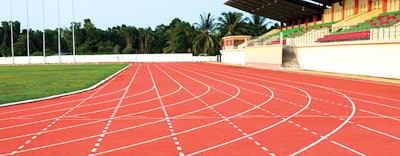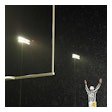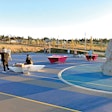
Whether you're refurbishing an existing track or constructing a new one, you have a lot of decisions to make. The type of surface you choose is perhaps the most important of all, as it will depend on your available financial resources and determine everything from athlete health and performance to future maintenance needs. Your provider should be able to offer suggestions on which surface is right for you based on where your facility is located, as well as your region's climate — including temperature, precipitation and general weather patterns. All of these factors will need to be balanced with cost. Here's an overview of the types of surfaces available and some of their advantages and disadvantages.
Natural
While not nearly as popular as they used to be, natural surfaces — cinder, clay and grass — are easy on athletes' bodies and carry a relatively inexpensive upfront cost. However, these types of surfaces are particularly vulnerable to the elements — they can become soggy or even unusable in heavy rains — and they require constant and costly maintenance. Even when only slightly wet, they can represent a significant slip-and-fall injury risk. While drainage and irrigation technologies have greatly improved, natural surface tracks are seeing far less adoption than they have in the past.
RELATED: PRODUCT SPOTLIGHT 2019: Stadiums and Outdoor Surfaces
Asphalt-Bound
Asphalt surfaces are usually a combination of asphalt and rubber or sand. They are relatively durable and unaffected by weather. While typically considered a fast surface, they can also be hard on runners' joints and muscles. These surfaces tend to change with the temperature, becoming softer in heat and harder in cold weather. Unfortunately, the materials needed for these surfaces can be limited in supply and as such carry a higher initial investment.
RELATED: How Synthetic Turf Revitalized an Outdoor Stadium and Enhanced a College’s Profile
Synthetic
In recent years, synthetic track surfaces have become incredibly popular. Latex and polyurethane surfaces are durable and offer ample shock absorption, speed and traction. These systems can be constructed in layers, and manufacturers offer a number of different textures. Synthetic surfaces come in a variety of colors, as well, and they can last in excess of 20 years.
RELATED: Find more solutions for your facility in the Buyers Guide
This article originally appeared in the September 2019 issue of Athletic Business with the title "Purchasing Guide" Athletic Business is a free magazine for professionals in the athletic, fitness and recreation industry. Click here to subscribe.
































